Results 10,791 to 10,800 of 12095
Thread: Anandtech News
-
09-22-20, 02:08 PM #10791
Anandtech: The Samsung 980 PRO PCIe 4.0 SSD Review: A Spirit of Hope
It may be a bit later than originally planned, but Samsung's first consumer SSD to support PCIe 4.0 is here. The Samsung 980 PRO was first previewed at CES in January, but we didn't hear anything further until leaks started appearing towards the end of summer. Now the 980 PRO is set to kick off a new wave of PCIe 4.0 SSD releases. These new changes are the most significant changes to Samsung's PRO SSD line since the debut of its first NVMe drive. We've put the drives through our SSD benchmark suite to see if they live up to the hype.
More...
-
09-22-20, 02:08 PM #10792
Anandtech: Qualcomm Announces Snapdragon 750G: Cortex-A77 & mmWave in the Premium Ran
Today Qualcomm is announcing a new entry into their premium tier Snapdragon 700-series with the brand-new Snapdragon 750G platform and SoC. The new SoC, as its name implies, lies slightly below the popular Snapdragon 765/768 series released earlier this year, but since it’s a newer design, employs some new IP, such as new Cortex-A77 based performance cores.
The chip on paper looks extremely similar to the Snapdragon 690 which was released last June, however the 750G does have some important distinctions such as the inclusion of mmWave 5G connectivity support which enables it to be Qualcomm’s lowest-end chipset with the feature, positioning itself as an important chipset for the US market.
Looking at the specs, the new Snapdragon 750G upgrades its CPU cores from the Cortex-A76 to newer Cortex-A77’s, clocking them up to 2.2GHz. The A77’s roughly has a 25% performance per clock advantage over the A76, meaning the new chip should be roughly equivalent to the Snapdragon 768G when it comes to CPU performance. Alongside the two performance cores, we also see 6x A55 cores clocked at up to 1.8GHz.Qualcomm Snapdragon Premium SoCs 2019-2020 SoC Snapdragon
768GSnapdragon
765 / 765GSnapdragon
750G
(NEW)Snapdragon
730G / 732GCPU 1x Cortex A76
@ 2.8GHz
1x Cortex-A76
@ 2.4GHz
6x Cortex-A55
@ 1.8GHz1x Cortex A76
@ 2.3GHz / 2.4GHz
1x Cortex-A76
@ 2.2GHz
6x Cortex-A55
@ 1.8GHz2x Cortex-A77
@ 2.2GHz
6x Cortex-A55
@ 1.8GHz2x Cortex-A76
@ 2.2GHz / 2.3GHz
6x Cortex-A55
@ 1.8GHzGPU Adreno 620
+15% perf over 765GAdreno 620
+20% perf (non-G)
+38% perf (765G)Adreno 619
+10% perf over 730GAdreno 618
(+15% 732G)DSP / NPU Hexagon 696
HVX + Tensor
5.4TOPS AI
(Total CPU+GPU+HVX+Tensor)Hexagon 694
HVX + Tensor
4TOPS AI
(Total)Hexagon 688
HVX + TensorMemory
Controller2x 16-bit CH
@ 2133MHz LPDDR4X / 17.0GB/s2x 16-bit CH
@ 1866MHz LPDDR4X 14.9GB/sISP/Camera Dual
Spectra 355 ISPDual
Spectra 355L ISPDual
Spectra 350 ISPEncode/
Decode2160p30, 1080p120
H.264 & H.265
10-bit HDR pipelinesIntegrated Modem Snapdragon X52 Integrated
(LTE Category 24/22)
DL = 1200 Mbps
4x20MHz CA, 256-QAM
UL = 210 Mbps
2x20MHz CA, 256-QAM
(5G NR Sub-6 4x4 100MHz
+ mmWave 2x2 400MHz)
DL = 3700 Mbps
UL = 1600 MbpsSnapdragon X15 LTE
(Cat. 15/13)
DL = 800Mbps
3x20MHz CA, 256-QAM
UL = 150Mbps
2x20MHz CA, 64-QAMMfc. Process Samsung
7nm EUV (7LPP)Samsung
8nm (8LPP)
On the GPU side of things, we’re seeing the Adreno 619 GPU which promises a 10% performance boost over the Adreno 618 in the Snapdragon 730G.
Besides the CPU and GPU, the new chip also features a Hexagon 694 DSP and tensor accelerator and promises a combined platform computational throughput of 4TOPs.
Looking at all of the above specifications, they’re oddly familiar and seemingly match those of the Snapdragon 690 SoC, so it’s likely Qualcomm did a lot of design re-use between the two chipset generations.
One further difference from the S690 is the upgrade from 1833 to 2133MHz LPDDR4X memory.
The key difference though to the 6-series sibling however is in the modem: The Snapdragon 750G uses an X52 modem, the same as on the Snapdragon 765/768 chips, with the distinguishing factor to the X51-based variant of the Snapdragon 690 being the additional for mmWave support.
This is an important feature to have for the US market handset designs as it opens up support for the Verizon 5G network, whilst the rest of the world primarily is focusing on sub-6GHz deployments first.
The Snapdragon 750G is manufactured on Samsung’s 8nm process node, and from a device development standpoint is interesting as it’s pin-compatible with the Snapdragon 690 – meaning vendors can pick between the two SoC options without a major platform redesign.
Commercial devices with the Snapdragon 750G are expected to be available by the end of the year, with Xiaomi claiming to be the first vendor to launch a smartphone based on the platform.
Related Reading:- Qualcomm Announces Snapdragon 732G: 730G Gets a Speed Bump
- Qualcomm Announces Snapdragon 690: 5G & A77 In The Mid-Range
- Qualcomm Announces Snapdragon 768G: Higher-bin 765 up to 2.8GHz
- The Samsung Galaxy S20+, S20 Ultra Exynos & Snapdragon Review: Megalomania Devices
- Qualcomm’s New 3rd Generation Snapdragon X60 5G Modem, Built on 5nm
- Qualcomm Announces Snapdragon 720G, 662 and 460 SoCs
More...
-
09-22-20, 05:34 PM #10793
Anandtech: Oracle Announces Upcoming Cloud Compute Instances: Ice Lake and Milan, A10
When the name “Oracle” is thrown around, hardware isn’t typically the first thing that comes to mind for most people. But, like other large tech companies that originally made their mark in the world with software, the market for Oracle has grown beyond just companies needing software and SPARC boxes. And as a result, Oracle has spent the last few years increasingly investing in cloud infrastructure hosting, looking to pivot towards becoming a service provider for customers who are becoming increasingly accustomed to contracting out virtually every bit of their computing needs.
Today Oracle is taking the next step towards growing their footprint in the cloud computing market by announcing their next generation of compute instances for their Oracle Cloud Infrastructure (OCI) business. In an atypically high-key event that included the CEOs from no less than AMD, Ampere, Intel, and NVIDIA, Oracle announced that they will be providing computing instances based on new and upcoming processors from all four companies. This not only includes updated systems based on AMD and Intel’s forthcoming EPYC Milan and Ice Lake Server products, but also NVIDIA’s A100 accelerator. And, for the first time for Oracle, there are also plans for Arm-powered instances using Ampere’s Altra processors. Overall, these new instances will be significant jump in hardware for Oracle, and one that’s part of a larger effort to vault into the top echelons of the cloud computing market.
While the market for cloud computing hosting is still relatively young even by rapid tech industry standards, it’s a market that’s quickly come to be dominated by a handful of players – particularly Microsoft (Azure), Amazon (AWS), and Google. The rapid adoption of cloud computing has caught the major players off-guard– at times leaving them struggling to build datacenters quickly enough – but also making them very successful in the process. For Microsoft and Amazon in particular, their cloud computing profits have quickly become a cornerstone of their quarterly earnings, overshadowing some of their more traditional business. In other words, cloud computing has become a growth opportunity (and a highly profitable one at that), and Oracle wants a piece for themselves.
As I mentioned earlier, Oracle isn’t brand-new to the cloud infrastructure game. But the company has needed time to grow, both to better understand the market and to figure out how to best meet customer needs. As a result, it’s only now after almost four years in that Oracle is really hitting the pavement on promoting their cloud services, hosting high-profile presentations, pre-briefing the press, and taking other steps to get their name out in the market. Oracle is in the midst of transitioning from being a database company to a cloud services company, and today is intended to be the inflection point where that transition hits its stride.
Hardware From All: x86, Arm, & GPU
Spearheading this latest phase for Oracle’s Cloud Infrastructure business is a new generation of compute instances, based on processors from vendors across the board. Along with updating their offerings to include the latest x86 processors from AMD and Intel, Oracle is also preparing to launch their first Arm-powered instances based on Ampere’s Altra processors. And of course, on the GPU side of matters Oracle is introducing systems and instances using NVIDIA’s A100 accelerator. In short, Oracle is rolling out the latest and greatest in compute hardware to woo other cloud customers, keep up with the competition, and otherwise entice traditional (on-premises) customers that it’s time to come to the cloud.
For OCI’s traditional CPU-based compute instances, the company is gearing up to launch updated instances with hardware from both Intel and AMD. OCI already offers instances based on Intel’s Cascade Lake Xeon and AMD’s EPYC Rome processors, and going forward the company is continuing to offer systems based on both vendors’ hardware.
On the Intel front, Oracle is preparing new Ice Lake Server instances, which will be launching next year as Oracle’s high-performance compute-focused X9 instances. Although Intel has largely kept Ice Lake Server details under wraps since the hardware has not yet officially launched, Oracle and Intel are already touting performance gains as high as 30% on some workloads versus their current Skylake-based X7 HPC instances.
Meanwhile not to be outdone, OCI is also preparing new E4 general computing instances based on AMD’s upcoming EPYC Milan processors. Similar to Intel, AMD hasn’t said a whole lot about what to expect from their upcoming Zen 3-based server processors, though with Rome already pushing 64 cores in a single chip, we’re expecting Milan to instead focus on improving per-core performance.
Early next year OCI will also be adding Ampere Computing’s wares into the mix. Oracle will be launching its first Arm-powered instances, becoming the latest cloud provider to incorporate Arm into their compute offerings, following Amazon’s interesting Graviton family of instances. OCI’s Arm instances will offer up to 160 core configurations based on Ampere’s Altra processors, which in turn is based on Arm’s surprisingly potent Neoverse N1 architecture. OCI’s Arm instances will clock as high as 3.3GHz, and Oracle will be positioning them as a cost-effective option for customers who need a lot of cores, but not necessarily maximum single-threaded performance.
Finally – and more immediately – OCI is refreshing its GPU compute instances. The company’s current P100/V100 instances are being joined by instances based on NVIDIA’s new A100 accelerator, the latest and greatest from the company. The Ampere architecture-based accelerator (not to be confused with the other Ampere) will be available in system configurations of up to 8 GPUs per node, with OCI offering clustered options as well to scale that out to 512 GPU clusters. Also of note, OCI is equipping their nodes with 2TB of RAM, twice as much as the 1TB found in NVIDIA’s DGX A100 boxes. And unlike all of the new CPU instances, which launch next year, the new A100 instances will hit general availability next week, on September 30th.
Growing the Base: Bare Metal and Other Clients
With their new compute instances set to come online over the coming weeks and months, Oracle is setting out to further grow their customer base. Being competitive is certainly a part of that, and rather unusually for Oracle, that includes competing on price. For example, Oracle expects their A100 instances to be the cheapest on the market at $3.05 per GPU hour, and their AMD/Ampere CPU instances are being similarly positioned for cost-effectiveness. So it makes for an interesting state of affairs for the cloud computing market when the traditionally (if not notoriously) profit-focused company is working to become a price leader.
Though while competing with the other major cloud providers is a concern for Oracle and a driver behind these upgrades, it’s not the only factor in Oracle’s cloud offerings. The cloud computing market is still a growing market, and that’s largely because traditional server customers are still in the process of transitioning over to cloud infrastructure. It’s these customers that Oracle is taking a particular interest in – rather than just winning over customers from other providers – to entice them to move their on-premise workloads into Oracle’s datacenters.
But traditional customers are traditional for a reason; while some are merely uninterested in change, others have workloads and use cases that don’t always map well to cloud computing paradigms. Meaning that in order to bring these customers into the fold, Oracle needs to figure out how to solve the “hard stuff” that keeps customers’ computing in on-premises servers and workstations. The low-hanging fruit there is performance, particularly in being able to deliver the kind of performance that customers need so that they can do everything in the cloud and without the benefits of quick uploading and downloading to local hardware.
Meanwhile other roadblocks are things like hardware control, with customers being accustomed to having hardware they can control virtually every aspect of, as opposed to the more abstract, plug-and-play nature of virtual machines and containers. Which is why a big focus of OCI’s efforts (and a major differentiating factor for them) is on their bare metal systems. True to the name, these systems are setup without virtualization and offer customers low-level access to the hardware, including BIOS settings as necessary. For containerized applications it’s completely unnecessary, but for traditional applications and legacy programs that have never been run on anything but bare metal hardware, it offers a more direct route to transitioning towards cloud hosting.
But the real trick, as always, is convincing those traditional customers to make the leap; simply having a hardware offering only goes so far, no matter how solid it is. Which is why Oracle’s efforts in the cloud computing space are as much about marketing as they are technology, and why Oracle is also rolling out use case studies, testimonials, and such, in order to bolster their claims. There’s even more money to be made in the cloud infrastructure business – avenues that AWS and Azure haven’t been able to fully tap thus far – but to reach them, Oracle has to be able to do the things that other cloud competitors cannot.
At any rate, Oracle’s new compute instances will be rolling out in two phases. Their new A100 GPU instances will be available next week. Meanwhile the bigger shift to new CPU instances will take place next year, with Intel’s Ice Lake Server, AMD’s EPYC Milan, and Ampere’s Altra processors all become available.
Gallery: Oracle Announces Upcomming Cloud Compute Instances: Ice Lake and Milan Join A100 and Altra



More...
-
09-22-20, 05:34 PM #10794
Anandtech: Intel Hires a New Technical Focused Chief Strategy Officer
The title of Chief Strategy Office is an interesting one for Intel. The C-level executive in this position obviously has the goal of managing strategy within the company, although as it pertains to growth more than anything else. Intel has made it clear that it wants to grow and expand into markets where it hasn’t traditionally been the dominant player, where there is a lot of addressable market such that Intel believes its products could generate a lot more revenue. Despite having this discussion at its 2019 Investor Meeting, showcasing areas such as 3D NAND, FPGA, Connectivity, Edge, IoT, Automotive and as part of that growth market opportunity, Intel has not had a Chief Strategy Officer to guide it at a high level for over 18 months. Today Intel announced a replacement, Safroadu (Saf) Yeboah-Amankwah.
Yeboah-Amankwah will officially take the position effective November 1st, but has a strong track record of being very technology focused. He holds bachelor’s and master’s degrees in Electrical Engineering and Computer Science from MIT, and has been a Senior Partner and Managing Partner of the Technology, Media, & Telecommunications division of consultants McKinsey and Company, where he has been for 26 years. Recent focal points for Yeboah-Amankwah have included the expansion of technology into Africa, noting a $300 billion potential as Africa’s digital economy expands, as well as supporting technology transformations of telecoms, financial instructions, agricultural operations, as well as mergers and acquisitions. His profile at McKinsey lists his expertise mostly across Finance, Operations, M&A, with a focus on technology.
At Intel, his role at Intel as CSO would appear to include driving growth-oriented strategies in the key areas Intel has already highlighted, most of which align with Yeboah-Amankwah’s previous experience. Alongside this, Intel Capital will also fall under his domain, the arm of Intel that acts as both an investment fund as well as finding companies with acquisition potential. Intel Capital is a large business unit of Intel we don’t often talk about here at Intel (I was rather looking forward to attending the Intel Capital event for a second year, before the lockdown occurred), and will likely have increased importance as Intel attempts to move into these markets with a concerted effort.
Saf Yeboah-Amankwah will report directly to CEO Bob Swan, which means that Swan now has even more direct reportees than ever before.
It is also worth noting that Intel seems to be departing from the general ‘Internal Promotion’ model it has held to since the 80s. The number of recent external hires in key positions (some of which listed below) has the potential to cause some internal friction between employees that have been moving up the chain the past 20 years or so with regards to where Intel’s corporate growth sits. Intel’s recent desire over the past few years to bring in external hires to fill key positions is a story in of its own right.
We were afforded a number of interviews of Intel’s previous CSO over the years. It will be interesting if we are given the same opportunity, to get an insight into Yeboah-Amankwah’s goals for Intel in 2021 and beyond.
Source: Intel
Related Reading- Intel Hires Fab Veteran, Former GlobalFoundries CTO Dr. Gary Patton
- Intel Hires Raja Koduri as Chief Architect & Senior VP
- CPU Design Guru Jim Keller Joins Intel
- Intel hires Qualcomm exec Venkata Renduchintala
- Chief Engineering Officer Murthy Renduchintala To Depart
- Intel Hires Bob Swan as Finance Chief Officer
- Robert Swan Named CEO of Intel
- Intel hires CFO George Davis from mobile chip rival Qualcomm
More...
-
09-23-20, 09:34 AM #10795
Anandtech: Intel Launches 10nm Atom Embedded CPUs: Elkhart Lake Now Available
The embedded and edge markets for Intel have always been hidden away within its IoT business, however at the Investor Meeting last year it was highlighted as one of Intel’s key growth areas. The requirements for businesses to enable automation and control, as well as apply machine learning or computer vision, have increased as new optimized algorithms and use cases enter the market, and this is the question that the new 10nm Atom Embedded CPUs are set to answer.
Elkhart Lake built upon Tremont with 10nm SuperFin
The new processors built with Tremont Atom cores will come as three series of processors: Pentium, Celeron, and Atom x6000E. These are all built with the same silicon die, offering up to four Atom cores with a 3.0 GHz turbo frequency, up to 800 MHz of Gen11 graphics (up to 32 EUs, three 4K60 displays), in TDPs ranging from 4.5 W to 12 W. All processors will support up to LPDDR4X-4267 or DDR4-3200. In-band ECC support is split - the Atom x6000E parts have it, but the Pentium and Celerons do not.
Intel is also moving to 10nm SuperFin (formerly 10++) for its Atom nodes, making these the next 10nm-class Atom processors after Intel’s Snow Ridge for 5G networks.Intel Elkhart Lake
Tremont Atoms for EmbeddedAnandTech Cores Base
MHzTurbo
MHzGPU
BaseGPU
MHzTDP TCC TSI Pentium J/N and Celeron J/N Pentium J6425 4 1800 3000 400 850 10W - - Celeron J6413 4 1800 3000 400 800 10W - - Pentium N6415 4 1200 3000 350 800 6.5W - - Celeron N6211 2 1200 3000 250 750 6.5W - - Atom x6000E Atom x6425E 4 1800 3000 500 750 12W - - Atom x6413E 4 1500 3000 500 750 9W - - Atom x6211E 2 1200 3000 350 750 6W - - Atom x6000RE: RTOS Support Atom x6425RE 4 1900 - 400 - 12W Yes - Atom x6414RE 4 1500 - 400 - 9W Yes - Atom x6212RE 2 1200 - 350 - 6W Yes - Atom x6000FE: Intel Safety Island Support Atom x6427FE 4 1900 - 400 - 12W Yes Yes Atom x6200FE* 2 1000 - - - 4.5W Yes Yes * Has no IGP
Focusing on IoT Features
Previous embedded processors like this were perhaps not always focused with the Edge market or the IoT market in mind. This time around however, Intel states that these products have been built from the ground up with this market in mind. This lends itself to a number of IoT-specific features.
There is now a new Programmable Services Engine to offload IoT workloads. This is a dedicated ARM processor, specifically an Arm Cortex M7, that supports real-time functionality, network synchronization, time sensitive networking, and low compute requirement workloads without needing to fire up the bigger cores. Some of the models support Time Coordinated Computing to enable worst-case execution time (WCET) and ultra-reliable low-latency communication (URLLC)
Two processors, the Atom x6427FE and x6200FE, are FuSa certified and support Intel’s Safety Island technology to allow integrated functional safety within IP blocks for finding and flagging faults, as well as initiating internal diagnostic tests.
All of these CPUs have three integrated 2.5 GbE MACs, all of which can be enabled for time-sensitive networking. The cores have Intel’s SHA extensions, as well as AES-NI and Intel Secure Key. Note that Intel is the only x86 vendors who does not have SHA-acceleration hardware, instead deciding to rely on instruction-level optimization.
The new processors all support Intel’s OpenVINO toolkit, with pre-optimized libraries for AI, ML, and computer vision acceleration. This is on top of Intel’s new Edge Software Hub, an interface for OEM customers to acquire pre-optimized deployment-ready software packages optimized for Industrial, Retail and Vision, all of which also offer customizability.
OS support is listed as Windows 10 IoT Enterprise, Yocto Project BSP, Linux Ubuntu, Wind River Linux LTS, and Android 10. The boot firmware supports Intel Slim Bootloader as well as coreboot, and the Programmable Services Engine runes on Intel’s own Zephyr RTOS-based platform.
For performance, Intel is claiming 1.7x single thread over previous generation Goldmont Plus Atoms, and 1.5x in multi-threaded workloads. Graphics performance gen-on-gen is listed as 2x. These numbers come from SPEC2006int and 3DMark11, but are based on pre-silicon projections of the new hardware. This would suggest that Intel doesn’t have the silicon in the labs yet to run the tests, which is a little odd if this is the launch day. Nonetheless, these platforms have a 7+ year lifecycle.
Intel confirmed that the CPU-to-PCH connection is not DMI in this instance, but just a GPIO. The chipset will support eight lanes of PCIe 3.0, four USB 3.1 ports, ten USB 2.0 ports, and two UFS 2.0 ports.
For package, Intel stated that all models will be FCGBA1493 and measure 35x24mm. Interestingly enough, this means we can calculate estimates for the die size.
- CPU die (left): 9.169 mm * 6.394 mm = 58.63 mm2
- PCH die (right): 6.369 mm * 9.778 mm = 62.27 mm2
The CPU is built on 10nm Superfin, the PCH die is built on 14nm. Note that in our recent review of the Tiger Lake UP3 processor, the PCH die for that processor with callipers was measured at 56.4 mm2. Given the rough nature of how we calculate these things, I might be inclined to believe that this mockup of Elkhart Lake might simply be the PCH die rotated and changed slightly, rather than a true-to-life example of the processor.
There's no word from Intel when these might be coming to low-power consumer products. Being built on 10SF, I suspect that the die cost might be higher than what we're normally used to. These new parts were announced as part of Intel's Industrial Summit, and as such these product managers wouldn't necessarily know what the client division would be preparing with the same silicon.
But Wait, There’s More!
Intel isn’t only announcing these new 10nm Atoms today. For the embedded applications that need more performance, there will be versions of the Tiger Lake UP3 mobile processors also for embedded markets. These are the same as the client versions of the processors, however with lower peak turbo frequencies. There will be a focus on enabling industrial workloads though the Xe graphics, AVX-512 units, and onboard neural accelerators. Real Time Computing will be enabled on some parts.
All three are also offered with In-Band ECC and a -40ºC to 100ºC temperature window, however these have the same SKU names as the ones we've already listed. Just to confuse things.Intel Core Embedded CPUs
Tiger Lake-UP3AnandTech Cores Base
MHzTurbo
MHzGPU
EUsECC TDP Temp
ºCGeneral Embedded i7-1185G7E 4C/8T 1200 4400 96 No 12-28W 0-100 i5-1145G7E 4C/8T 1100 4100 80 No 12-28W 0-100 i3-1115G4E 2C/4T 1700 3900 48 No 12-28W 0-100
Related Reading- Intel's new Atom Microarchitecture: The Tremont Core in Lakefield
- Intel Lists New Atom Core: Tremont to Come After Goldmont Plus
- Intel’s Tiger Lake 11th Gen Core i7-1185G7 Review and Deep Dive: Baskin’ for the Exotic
- Intel’s 11th Gen Core Tiger Lake SoC Detailed: SuperFin, Willow Cove and Xe-LP
- The Intel Lakefield Deep Dive: Everything To Know About the First x86 Hybrid CPU
More...
-
09-23-20, 09:34 AM #10796
Anandtech: Western Digital Expands Purple Surveillance Storage Options with 18TB HDD
Western Digital has been marketing their surveillance-focused storage solutions under the Purple branding since 2014. After the SanDisk acquisition, the company started selling WD Purple microSDXC cards as a complement to the SanDisk High Endurance cards, bringing in ruggedness and durability in terms of weather and humidity-resistance as well as extended operating temperature range (-25C to 85C). The Purple drives and cards come with firmware tweaks that make them a better fit for SMB / SME network video recorders (NVRs) and IP cameras.
In conjunction with the release of the EAMR-enabled 16TB and 18TB WD Red Pro SMB NAS HDDs, Western Digital is also releasing a 18TB WD Purple Surveillance Hard Drive. WD markets the ATA streaming features and caching support in the Purple hard drives under the AllFrame moniker. There are two variants - the AllFrame 4K is for 6TB and lower capacity drives that are 5400RPM versions with a 180TB/yr workload rating. This allows recording of up to 32 simultaneous video streams. The AllFrame AI version (for 8TB and higher capacity drives operating at 7200RPM with a 360TB/yr workload rating) allows recording of up to 64 video streams simultaneously with the reading of 32 video streams for analytics purposes. Specific NVRs also support the Western Digital Device Analytics feature for monitoring the health of the installed Purple hard drives. These drives carry a 1.5M hours MTBF rating and a 3-year warranty. The 18TB drive availability is scheduled for October 2020.
The WD Purple 1TB microSDXC card is the new capacity flagship in the lineup. Similar to the other microSDXC cards in the WD Purple line, the WD Purple SC QD101 1TB version also utilizes BiCS 4 96-layer 3D NAND flash (500 p/e cycles, QLC-based). The endurance rating is enough for the drive to support up to 512TB of writes. The warranty period is for 3 years from the data of purchase, or the TBW workload limitation (whichever is earlier). Certain IP cameras such as the Tyco Cloud Illustra Series from Johnson Controls also support card health monitoring when microSDXC cards in the WD Purple SC QD101 are used. This allows installers to remotely monitor the remaining lifespan of the installed card, if needed. WD expects the card health monitoring scheme to become available in cameras from other OEMs in the future. Similar to the Purple HDDs, the SC QD101 cards also carry a 3-year warranty. The 1TB version is expected to become available in November.
The prices for the new products are expected to be announced closer to availability.
More...
-
09-24-20, 10:42 AM #10797
Anandtech: NUVIA Completes Series B Funding Round: $240M
One of the more interesting startups of late is NUVIA, with promises of a new Arm-based processor for the datacenter to rival the x86 dominance of AMD and Intel. The team at NUVIA is strong, comprised of top SoC architects from Apple and Google, with a long history of success within the ranks of the company. Building a leading-edge SoC takes a long time, and so we’re still not expecting NUVIA to offer a product for a while yet, but in that time the company is going through rounds of investment in order to both build the company as well as accelerate R&D before the first set of products are launched. Today NUVIA is announcing that the second round of funding, originally scheduled at for the beginning of the year, has been completed.
Series A funding was announced on November 15th, 2019, and raised $53M. Lead investors include WRVI Capital, the Mayfield Fund, Dell, Capricorn Investment Group, and participation from Nepenthe LLC, two the final two acting as investor partners. NUVIA currently resides on a floor in one of Dell’s unused corporate buildings in the Bay Area, for example.
Series B funding is being announced today, and has raised $240M. The funding round was led by Mithril Capital in partnership with former founders of Marvell, as well as Blackrock, Fidelity Management & Research LLC, and Temasek, with additional participation from Atlantic Bridge, Redline Capital and the previous members from Series A.
This brings the total raised to $293M. No further information was detailed in NUVIA’s press release.
Key figures at NUVIA include the three founders: Gerard Williams III, CEO and ex-Chief CPU Architect at Apple for a decade with another 10 years as an Arm fellow; Manu Gulati, SVP of Silicon Engineering and former lead SoC architect at Google with an 8-year stint at Apple; and John Bruno, SVP of System Engineering and ex-System Architect at Google as well as the founder of Apple’s silicon competitive analysis team. NUVIA has also hired key people known to AnandTech, such as Anthony Scarpino (Senior Director Software, former AMD/ATI), Jon Carvill (VP Marketing, former Intel and Qualcomm), Jon Masters (VP Software, former Red Hat), and Heather Lennon (Digital Marketing, former AMD and Intel). Jon Masters has since returned to Red Hat after 11 months at NUVIA.
We do know some about NUVIA’s first generation of products, known as the Orion SoC using the Phoenix core with ‘an overhaul of the traditional CPU pipeline’. NUVIA has stated that this new design will deliver industry-leading performance with the highest levels of efficiency, with their own numbers targeting +40-50% IPC increases over Zen2 for only a third of the power. On top of this, NUVIA will have to create an ecosystem and distribution platform for its products, which is likely where the Dell involvement will kick in.
With the recent announcement of the acquisition of Arm by NVIDIA, it would be interesting to hear how this might change the relationship between Arm and its partners, particularly architecture licensees, such as NUVIA. There’s no doubt that the future of that relationship is going to be a strong part of how future roadmaps are formed, or in NUVIA’s case, future rounds of funding.
Related Reading- NUVIA: New Server CPU Startup Going After Intel and AMD
- NUVIA Phoenix Targets +40-50% ST Performance Over Zen 2 for Only 33% the Power
- It’s Official: NVIDIA To Acquire Arm For $40 Billion
- Arm Announces Neoverse V1 & N2 Infrastructure CPUs: +50% IPC, SVE Server Cores
More...
-
09-24-20, 10:42 AM #10798
Anandtech: ADATA External and HP Portable SSDs Review: Featuring the ADATA SE800 and
Portable flash-based storage solutions are one of the growing segments in the direct-attached storage market. The emergence of 3D NAND with TLC and QLC has brought down the cost of such drives. NAND manufacturers like Western Digital, Samsung, and Crucial/Micron who also market portable SSDs have an inherent advantage in terms of vertical integration. However, the current pace of progress in flash memory has led to competitively priced offerings even from vendors who need to buy flash in the open market. ADATA and HP (Biwin / Multipointe) are two such vendors in this space. Today, we are taking a look at six different portable SSDs - three each from ADATA and HP - forming the bulk of their 2020 portfolio of external flash storage solutions.
More...
-
09-24-20, 02:56 PM #10799
Anandtech: Seagate Unveils CORTX Object Storage Software with Lyve Drive Rack Hardwar
Seagate has unveiled CORTX, an open-source S3-compatible object storage software, today at their Datasphere virtual event. The source for this software-defined-storage (SDS) platform is hosted on Github. Seagate has also organized a group of open source researchers and developers in this space under the 'CORTX Community' moniker. As part of the Github repository, Seagate is providing a pre-built virtual machine image that enables users to get a quick start with testing.
Seagate is a hardware vendor at its core, and as part of the CORTX initiative, it is also introducing the Lyve Drive Rack - a reference architecture supported by Seagate and available later this year with 20TB HAMR drives.

The Lyve Drive Rack is expected to serve a variety of use-cases including backup/restore, big data and analytics, AI & ML, file sharing and synchronization, as well as video surveillance. Each rack node can support up to 106 drives, and a cluster can scale up as necessary.
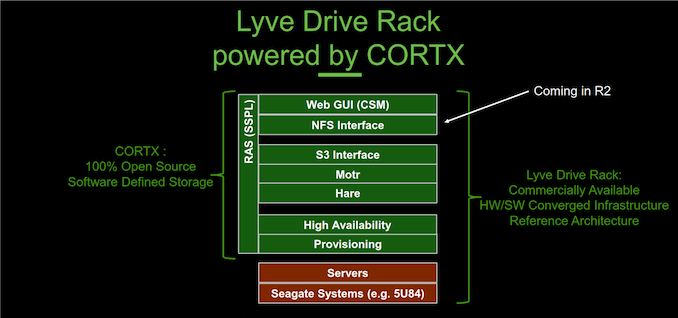
It makes sense for Seagate to open source CORTX, as it helps them push support for emerging hardware upstream to drive up adoption rates. It is better for the community as a whole, as there is no vendor lock-in with proprietary architectures. It essentially eliminates object softwre licensing costs from the datacenter stack. Private cloud infrastructure also receives a fillip, with the capabilities and capacities available with the hyperscalers becoming more accessible.
Gallery: Seagate Unveils CORTX Object Storage Software with Lyve Drive Rack Hardware Reference Design


More...
-
09-25-20, 11:37 AM #10800
Anandtech: What Products Use Intel 10nm? SuperFin and 10++ Demystified
For our audience that regularly keeps track of Intel’s product portfolio, it would be hard to miss that the naming strategy of Intel’s process node technologies is a bit of a mess. To some, those words are themselves an understatement, as Intel has shifted its naming strategy 2-3 times since the launch of Intel’s first 10nm products. Not only that, even Intel’s various departments internally have a hard time keeping track of ‘what is this manufacturing process being called today’ when the press like AnandTech ask for details on the latest upcoming products.
Knowing this, and knowing what issues Intel has been having, I wanted to demystify Intel’s manufacturing process naming scheme such that users and engineers alike, even if they are inside Intel, can understand what is what but also importantly why. The why is the crucial factor.
More...
Thread Information
Users Browsing this Thread
There are currently 5 users browsing this thread. (0 members and 5 guests)





 Quote
Quote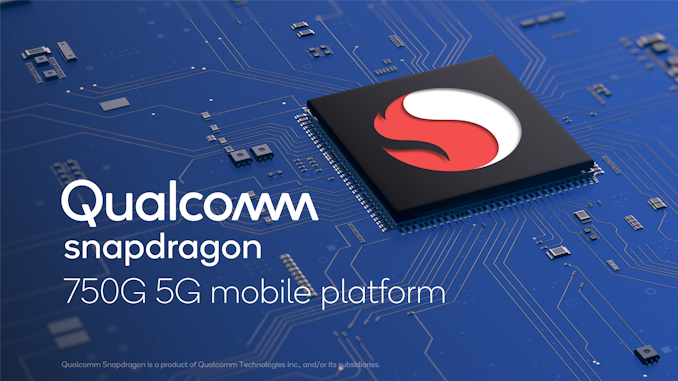


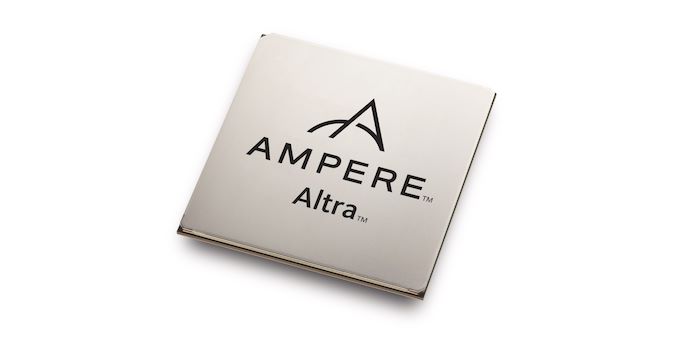
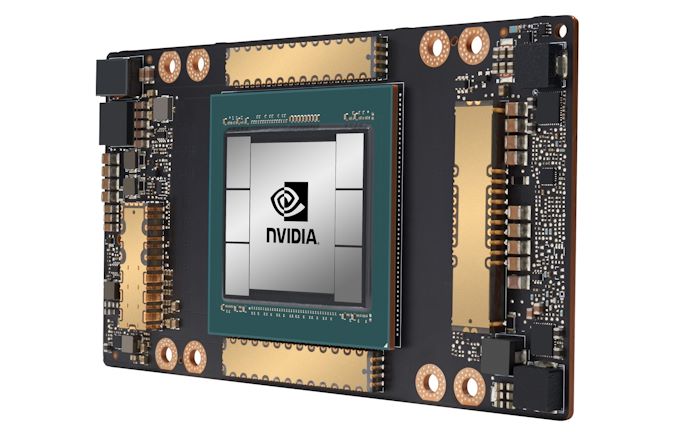

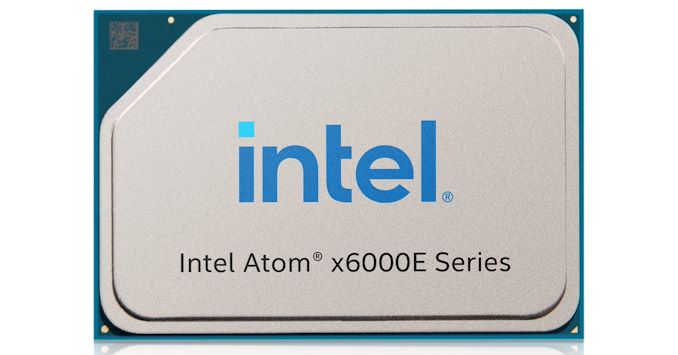
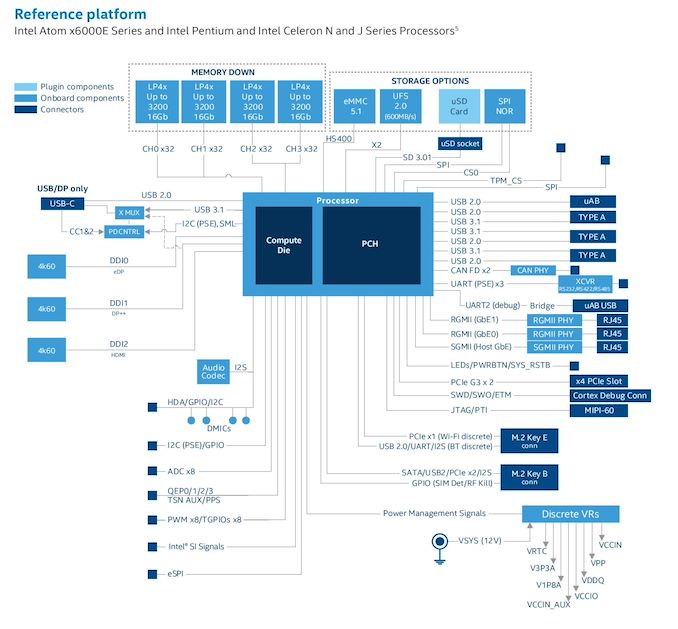
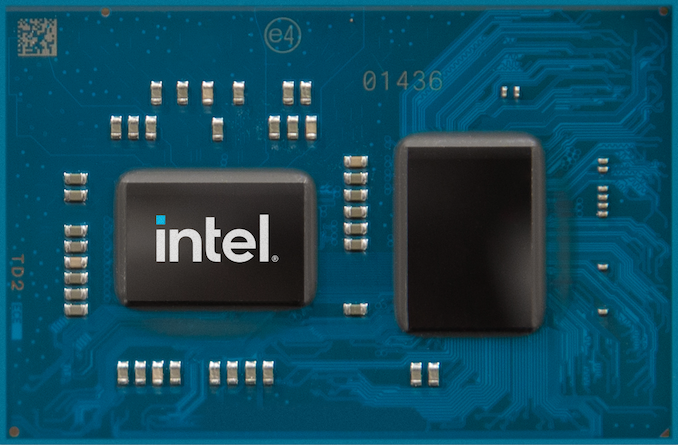
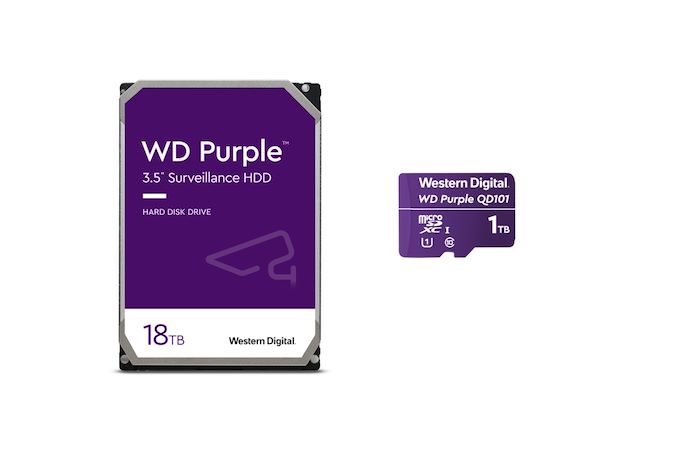

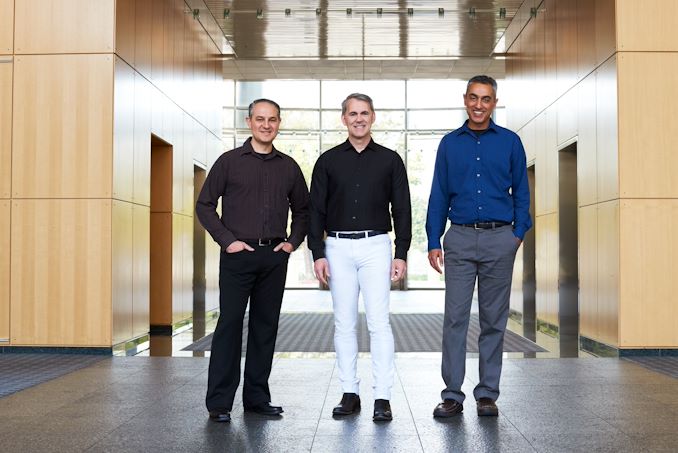
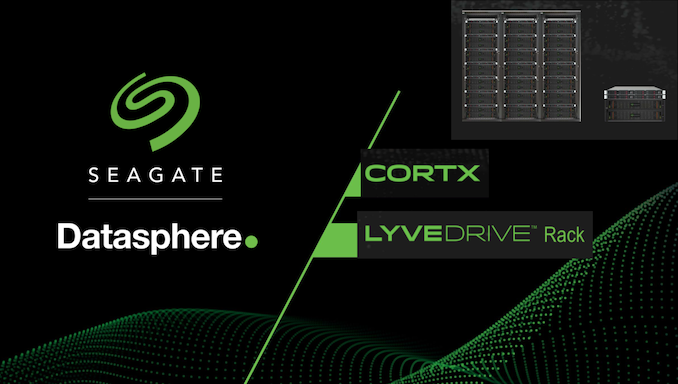
















Bookmarks